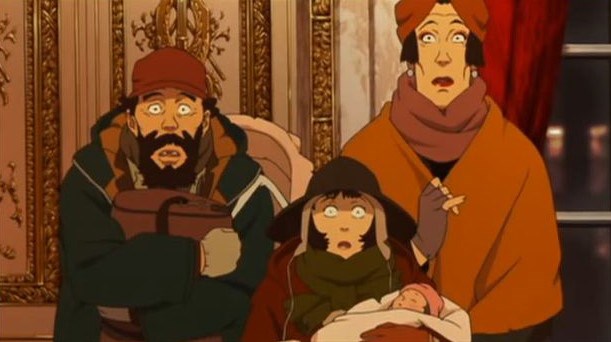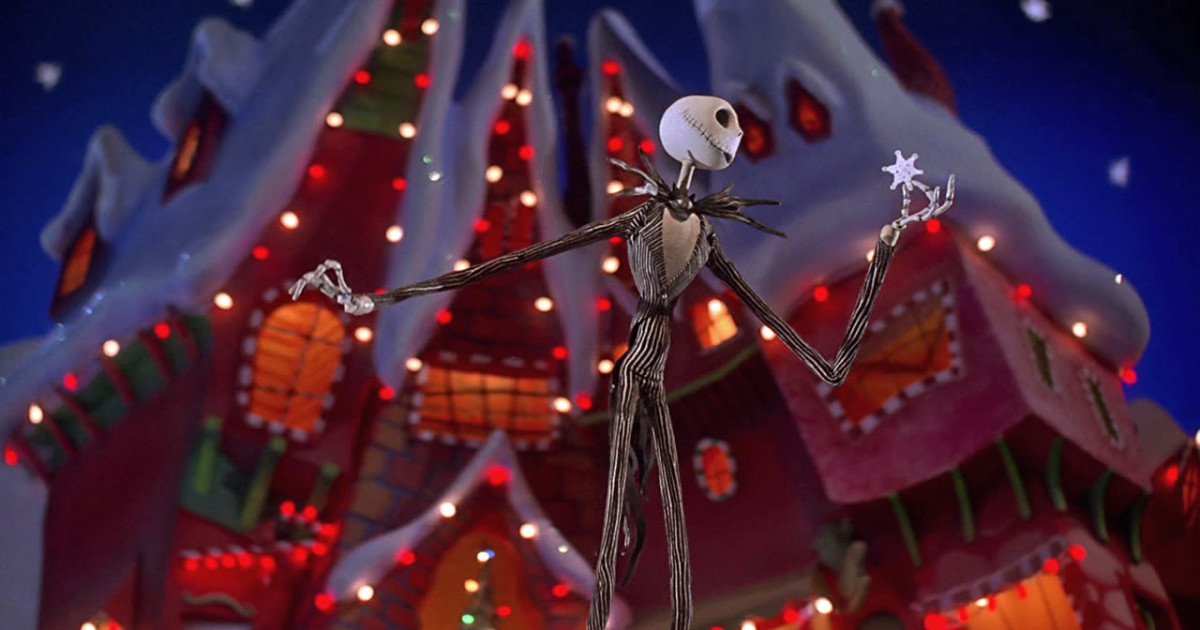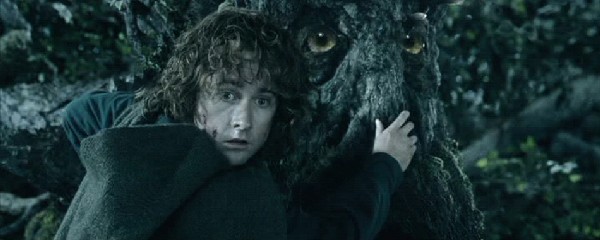Around winter holidays, one of the most beloved traditions is staying in, bundling up, and watching a favorite movie or television show. Eventually, the media we are drawn to once becomes something we might return whether after many years or on a regular annual basis. Movies, like other forms of art, both entertain us and give us insight that we can describe as not only culturally relevant but theological, ministerial, or even prophetic. At United Community, we are committed to the role of art in our collective ministry, and so this year, some of our faculty and staff have opted to share about our favorite holiday movies, the lessons we've learned, and blessing we can draw from them.

National Lampoon's Christmas Vacation
Our family has inadvertently made it a tradition to watch this movie every Christmas Day when we gather for our extended family get together of games, food, drinks and stories. There are always laughs and shouts of our favorite movie lines, and so many happy memories.
While it might not be theological reflections exactly (I’ll leave that to the professors), there are a few good sense themes that can be picked out of this classic movie.
First, don’t be a snotty, materialistic, money hungry jerk. Karma’s a bitch, and when it comes knocking you might find an expensive stereo destroyed mysteriously by something wet, or you might find yourself kidnapped by an employee’s crazy cousin Eddie.
Second, don’t put unreal expectations on yourself or expect everything to go perfectly as planned. Clark’s wife points this out to him in the beginning of the movie, setting the stage for “Sparky’s” unrealistic plans and subsequent failures. However, when things do get hairy, you can take his dad’s advice and get some help from your friend Jack Daniels.
Third, it’s ok to just roll with it when the unexpected happens. The odd cousin may show up, the family cat may get wrapped up for a Christmas present, the Pledge of Allegiance is said in place of the dinner blessing, you may get stuck in the attic while everybody is shopping, the turkey may be overcooked, or you may nearly get killed on your way to choose the Christmas Tree. Life is what you make of it, and sometimes you just have to roll with whatever happens and all you can do is laugh.
Finally, we all have quirks that make us unique, but the holiday season is about showing love and compassion for all family, friends, and humanity in general.
“Hallelujah! Holy Shit! Where’s the Tylenol?” 😊
–Hillary Vamstad, Registrar and Academic Advisor Title IX Coordinator

Tokyo Godfathers
Tokyo Godfathers is a 2003 animated film by the late director Satoshi Kon. The “godfathers” of the film are three people who are experiencing homelessness: the gambling, alcoholic Gin; the transgender and former drag queen Hana; and Miyuki, the runaway teen daughter of a police officer. These three, a kind of assembled family, discover an abandoned baby on Christmas Eve. Hana wants to raise the child, but the three realize they don’t have the means to raise her, so Hana agrees to help the others find the baby’s parents on the condition that the parents explain how they could abandon their child. What ensues is a manic adventure full of humor, hijinks, and heartfelt realizations, where miraculous coincidences occur, and where each of the “godfather’s” utterly human backstory is unveiled. Meanwhile, the buildings, streets, windows, graveyards, and alleyways of Tokyo become characters in their own right, animated as a brightly lit, snowclad, and constantly shifting as they aid the trio on their quest.
As a queer person myself, I return to this movie every year for its complexification and celebration of “family” beyond the most traditional or heteronormative notions. I love how the film asks what we owe our neighbors and strangers along with our blood relatives. I also learn from and relate to its portrayal of a gender-non-conforming character in Hana who bears some of the greatest hurts of the characters while nonetheless acting as source of poetry and direction for the three misfits. And I love that none of the characters are of the saccharine Hallmark variety. Rather, they are warted, petty, hyperbolic, foolish, angry, and apathetic in turns, just like all of us. And within each character is a well of love, just like in all of us.
The figures of Hana, Miyuki, and Gin reinterpret for a modern context the heart of the Biblical Nativity Story, with its refugees, poor shepherds, and “suspect” women. For Satoshi Kon, the miraculous is in the mundane, the mundane beams with vibrancy, moments of time and space explode with color, gesture, emotion, and music only to realign into a clarity of revelation. May we all be like the Tokyo godfathers and glimpse from the chaos, fear, and confusion of our lives a sense of wonder; may we search for what is right, even if it takes us onto strange and winding paths; and may we foster such love between one another, reimagining family into its most expansive possibilities.
–Max Yeshaye Brumberg-Kraus '20, Alum
The Lord of the Rings Trilogy
My favorite holiday movie is not a holiday movie. Every year one was released, right around Christmas time, my family went and saw The Lord of the Rings Trilogy movies. We never saw movies in the theater as a family, but for some reason, we went to these - I think because my dad loved C. S. Lewis, and Tolkien was associated with Lewis, so we could talk him into liking TLOTR, and if dad was in, we all were.
Tolkien had a gift for weaving the traditional themes of good vs. evil and the Hero's Journey with beautiful stories of friendship, respect, wisdom, deep connection with creation, and history. He also helped us see the need for not only a single individual or community to stand against evil, but for a network - or system - of communities to collectively overcome the powers of hatred, fear and death.
For me, Frodo’s intentional, purposeful and inexorable plodding trudge to Mordor is a powerful depiction of the Jesus event of overcoming death by entering into death - not just for one’s self, but for the entire world. This is the trilogy’s key lesson: that we cannot avoid or reject evil and death, we have to enter into the vulnerable places, the shadow side of ourselves, our church, our communities and our world with intention and purpose and embrace our own death/loss/brokenness; in doing so, we enact redemption for ourselves and for at least our little corner of God's beloved creation.
I pray that people around the world use this time of pandemic, social unrest and isolation to embark on their own courageous adventure toward embracing their shadow side and unearthing their True Self, the Self that leads us all toward wholeness and life abundant.
–Emily Meyer, Ministry Lab Executive Director

The Nightmare Before Christmas
One of the benefits of The Nightmare before Christmas (1993) is that it can be ceremoniously viewed at both Halloween and Christmas. In it, the protagonist Jack Skellington, king of Halloween Town, has grown tired of his role and after stepping through a door deep in the woods, discovers the enchanting Christmas Town, and then hatches a plan to give Santa a break. Hilarity, screams, several musical numbers, and eventually disaster ensues. What I’ve always appreciated about the film (besides the aesthetic, the stop-motion animation, and Danny Elfman’s voice) is Jack’s struggle to articulate something ineffable about Christmas. His eureka moment comes in a song called “Jack’s Obsession,” during which he uses scientific equipment to study various Christmas-related objects. He seems to lament:
Christmas time is buzzing in my skull
Will it let me be? I cannot tell
There are so many things I cannot grasp
When I think I've got it, and then at last
Through my bony fingers it does slip
Like a snowflake in a fiery grip
The elusiveness of the meaning of Christmas frustrates and compels Jack. He describes it as a process of remembering or recognition:
Something’s here I’m not quite getting
Though I try, I keep forgetting
Like a memory long since past
Here in an instant, gone in a flash
What does it mean?
What does it mean?
But the pursuit is as enjoyable as it is futile, and perhaps it is precisely that delight that spurs Jack on:
These dolls and toys confuse me so
Confound it all, I love it though
When his calculations and material examination of decorations fail to produce anything, he begins to understand that there is more to Christmas and in fact it is accessible to everyone:
It's simple really, very clear
Like music drifting in the air
Invisible, but everywhere
Just because I cannot see it
Doesn't mean I can't believe it
While this song concludes with Jack thinking he’s understood Christmas, from which he goes on to orchestrate the kidnapping of Santa Claus and the hijacking of Christmas, in the end, Jack realizes he had indeed failed to fully understand what Christmas was about, and in the process comes to appreciate Halloween Town anew. No doubt theologians and seminarians can especially relate to Jack’s attraction to and struggle with understanding and articulating the unknown. During this season of wintry stillness and anticipation, may we experience joy in the pursuit of the ineffable divine.
–Dr. Jennifer Awes-Freeman, Assistant Professor of Arts and Theology; Program Director for Theology and the Arts
May these movies bring you blessings for the new years. And may take time to enjoy the movies, visual art, television shows, music, books, food and company that make this season special for you!





Your Comments :